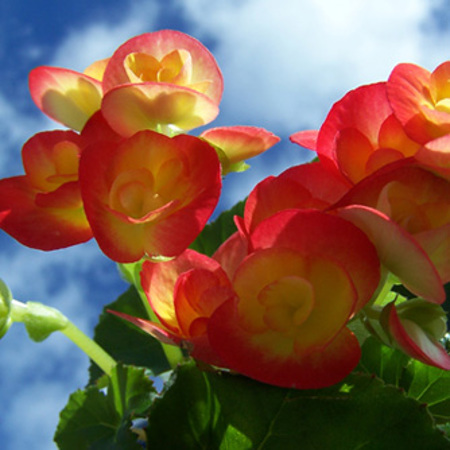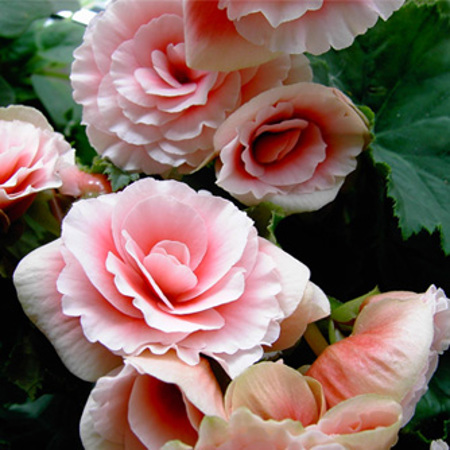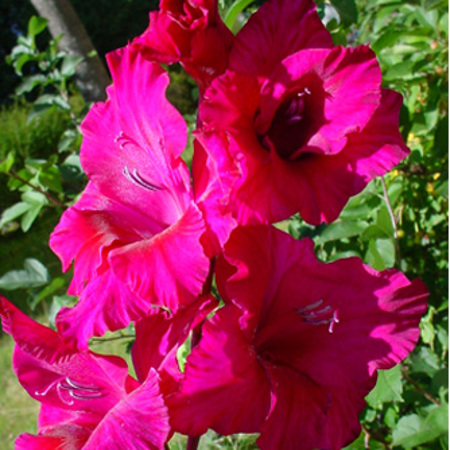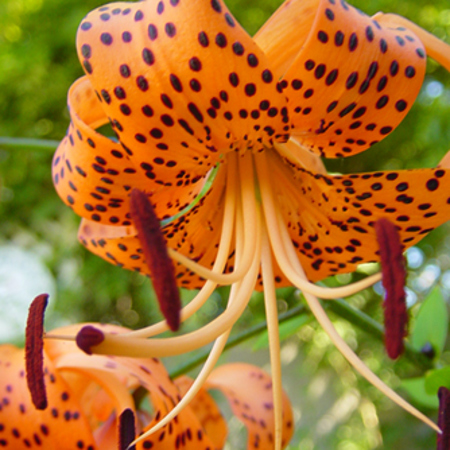Summer Flowering Bulbs
BackSummer flowering bulbs provide a vibrant display of colour in your garden during the hottest time of year and with minimal effort. They can be planted on mass in garden beds or containers and many are great as cut flowers. With so many to choose from it might seem overwhelming in the beginning so we’ve listed a few of our favourites below to help you get started.
By the way we’re being a bit lazy when we call them summer bulbs as they’re actually a mix of tubers, rhizomes, corms and bulbs. But that’s getting all technical on you!
How To Grow Summer Bulbs
In general these bulbs are planted in spring in a sunny position with good drainage and protection from hot winds so flowers last longer. Add some organic compost if the soil is poor and plant the bulbs with the pointed end facing upwards. A good rule of thumb is to plant them twice as deep as they are high. Plant in scattered groups (rather than rows) to create a more natural affect. If planting in pots use a premium quality potting mix.
Tall varieties of dahlias and liliums usually need to be staked and this should be done at the time of planting. Mulch to also protect the plants from drying out and keep the soil cool.
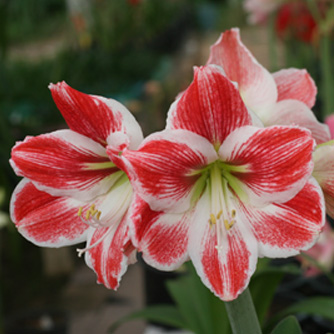
Red and white hippeastrum
Fertilising
Top dress the soil with manure/compost or an organic fertiliser at planting and then again after flowering. In addition apply a mixture of OCP eco-seaweed and OCP eco-aminogro fortnightly to push strong growth. You’ll be rewarded with large, long lasting flowers throughout summer and fat healthy bulbs ready to flower again next year.
Lifting & Storing Bulbs
This is a tricky one as some bulbs can stay undisturbed in the soil for years while others need to be lifted and stored each year when they die down. The main reasons for lifting bulbs is to protect sensitive bulbs from frost and excess winter watering/rain which can cause rotting.
If you do need to lift bulbs then carefully dig around the clump to avoid slicing through a bulb. Brush off excess dirt and when completely dry place them in a breathable bag. Store in a cool, dry place with protection from vermin.
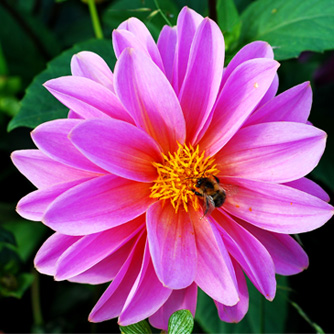
Pink dahlia with foraging bee
Pests & Diseases of Summer Bulbs
While these bulbs are pretty tough they can still suffer from a few problems from time to time:
- Aphids and mites are the most common with the occasional whitefly problem. Treat with OCP eco-oil or OCP eco-neem.
- Caterpillars may take a liking to the broad leaf plants (eg dahlias and tuberous begonias) and can be controlled with OCP eco-neem.
- Fungal problems on foliage, like powdery mildew, can develop on some bulbs (especially dahlias). Improve airflow around plants, avoid wetting foliage and treat with an organic fungicide as required.
- Check stored bulbs periodically to ensure they are still firm. Remove any soft or rotting ones to prevent more bulbs from being infected.
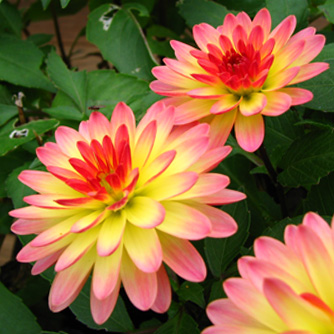
Two toned dahlia
Our Summer Bulb Favourites
Dahlias – they bloom in just about every colour under the sun and in every size and shape from miniature to the giant ‘dinner plate’ varieties. Flowering from December to April they are fabulous as cut flowers. Dahlias are frost sensitive and are best lifted and stored each year in a cool, dry place.
Gladiolis – with their tall, sword shaped flower stems gladys provide dramatic interest in the summer garden. They are best planted in dense clumps and will flower 90 days from planting. Stagger your gladiolus plantings from August to December to provide a continuous display from summer into autumn.
Hippeastrums – they have striking trumpet shaped flowers and are perfect for pots or garden beds. They are best grown in an easterly position so that the hot afternoon sun doesn’t burn their leaves. Hippeastrum bulbs last 15-20 years and can be left undisturbed for many years. Plant with the tip of the bulb poking out of the soil.
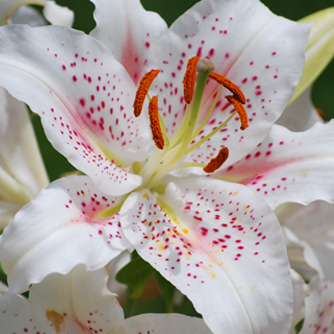
White oriental lilium
Liliums – there are many types of liliums including Oriental, Asiatic and Christmas Lilies and all add elegance to any garden with their lovely star shaped flowers. The Oriental Lilies are doubly blessed with a heady perfume. Liliums tolerate a range of soils and conditions but will always do better in rich fertile soil. They are happy to stay undisturbed in the garden so there’s no need to lift them. Liliums make spectacular cut flowers with long stems and long lasting flowers.
Tuberous Begonias – these are shorter growing plants that produce large rose like flowers. They’re a bit fussier than the other bulbs but are great to brighten up a shady spot and well worth the effort. They need excellent drainage and regular liquid feeding throughout the growing season. Many people grow them in pots where it is easier to get conditions just right. Tuberous begonias are frost tender and prone to rotting away in winter. Lift them from garden beds to avoid these problems or, if in pots, keep them very dry over winter.
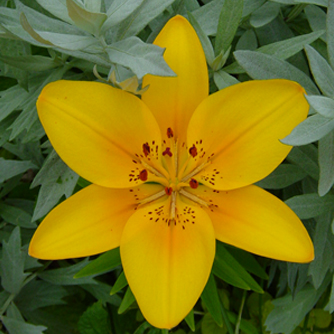
Yellow asiatic lilium



